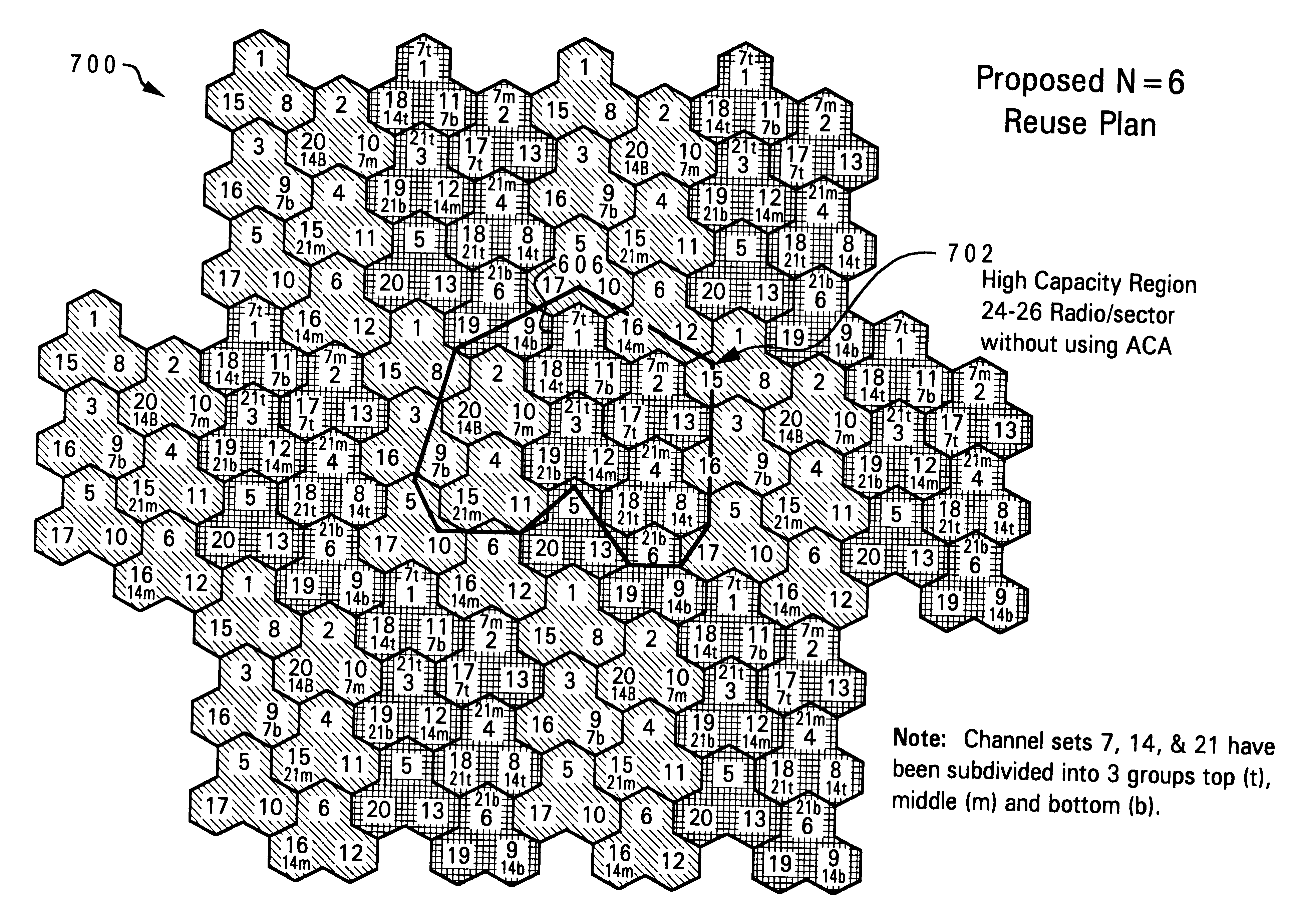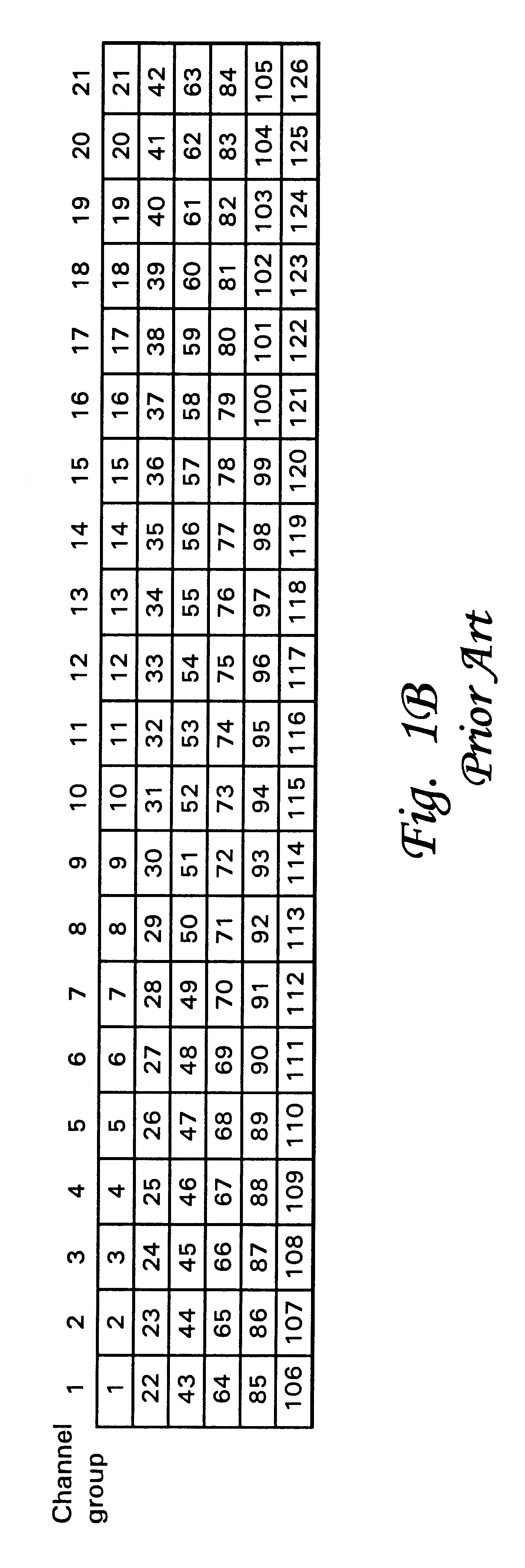Method and system for solving cellular communications frequency planning problem
a technology of cellular communication and frequency planning, applied in the direction of network planning, electrical equipment, selection arrangements, etc., can solve the problems of limited number of channels available for use, system cost and low profit margin of communication companies supplying such services, and the problem of how to provide more channels within the service area
- Summary
- Abstract
- Description
- Claims
- Application Information
AI Technical Summary
Problems solved by technology
Method used
Image
Examples
Embodiment Construction
The present invention represents a radical departure from previous methods and systems providing solutions to the frequency assignment problem. As was mentioned above, typical solutions to the problem generally proceed as follows: (1) an assumption is made as to the number of sectorized cells in a cell cluster across which frequency groups are to be reused, (2) a frequency assignment table appropriate to the chosen number of cells in the cluster is obtained--typically from a cellular reference handbook, and (3) trial-and-error is engaged in to achieve acceptable system performance when the number of available sectors in a cell cluster do not allow for a completely "balanced" system wherein no directly-adjacent carriers are present within directly adjacent sectors. The methodology used to originally generate the frequency assignment tables historically was that at the sector level you have multiple channels in one sector, and in order to transmit in a sector you have one antenna over...
PUM
 Login to View More
Login to View More Abstract
Description
Claims
Application Information
 Login to View More
Login to View More - R&D
- Intellectual Property
- Life Sciences
- Materials
- Tech Scout
- Unparalleled Data Quality
- Higher Quality Content
- 60% Fewer Hallucinations
Browse by: Latest US Patents, China's latest patents, Technical Efficacy Thesaurus, Application Domain, Technology Topic, Popular Technical Reports.
© 2025 PatSnap. All rights reserved.Legal|Privacy policy|Modern Slavery Act Transparency Statement|Sitemap|About US| Contact US: help@patsnap.com



